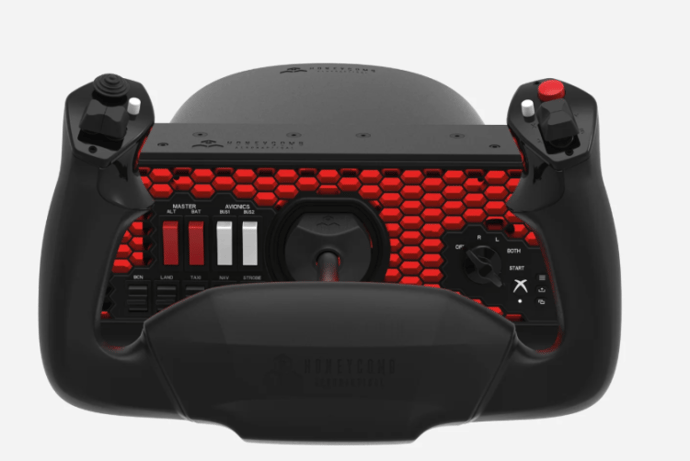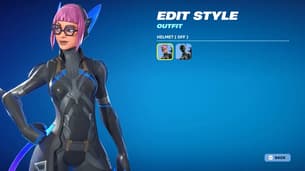
Best Hardware for Competitive Flight Simulation

Top flight simulation games offer a range of experiences, from realistic civilian flying to intense aerial combat. Flight simulator games replicate the experience of flying an aircraft, offering virtual environments where players control planes, helicopters and other flying vehicles. These games range from simple controls for casual play to highly detailed simulations used for training. They often simulate realistic flight dynamics, weather, air traffic and real-world locations. Some focus on civilian aviation, while others emphasize military combat scenarios.
Microsoft Flight Simulator 2024 stands out for its incredible realism, offering hyper-detailed landscapes, real-time weather and accurate flight models, making it one of the most visually impressive simulators available. X-Plane 12 is another popular choice, particularly praised for its advanced flight physics and ability to model a wide variety of aircraft, making it a favorite among both professional pilots and enthusiasts. For those who enjoy combat scenarios, DCS World excels with its military-grade aircraft and complex missions, offering everything from fighter jets to helicopters in realistic combat environments. Aerofly FS 2024 is perfect for beginners and intermediate players, combining impressive visuals with ease of use. FlightGear, a free, open-source simulator, allows users to customize aircraft and scenarios, fostering a vibrant community of creators and modders.
In 2025, flight simulation has taken massive leaps forward, with both casual enthusiasts and professional esports pilots demanding more realistic flying experiences. Whether training for real-world aviation or competing in a Microsoft Flight Simulator esports event, the right hardware setup is crucial for performance and immersion. Serious competitive flight sim setups focus on precision, responsiveness and realism, with yokes, rudder pedals and throttle quadrants replicating real cockpit controls.
Notable figures and influencers in the flight simulation community have significantly shaped the landscape of competitive flying as well. Chewwy94 (Matt Davies), a UK-based content creator is widely regarded as one of the pioneers in streaming serious sim flights. He is known for his insightful reviews of hardware and cockpit builds, helping both beginners and advanced users improve their setups. Another key influencer is Captain Canada, who has built a reputation for blending real-world airline knowledge with esports-style flying challenges. His content, which promotes competitive flying events across platforms like Twitch and YouTube, resonates with a wide audience, from casual enthusiasts to serious sim pilots.
Esports tournaments in Microsoft Flight Simulator, DCS World and X-Plane 12 now offer cash prizes, making elite gear a valuable investment. The introduction of real-time global weather systems, live ATC and AI-driven traffic further boosts the demand for high-performance PCs and advanced GPUs. Streamers and content creators are pushing the boundaries of realism, using ultra-wide monitors and VR headsets to create immersive cockpit environments.
High refresh rate displays and low-latency response times are critical for competitive pilots. This growing intersection of esports, simulation and even gambling is pushing aviation gaming into the mainstream, transforming it from a niche interest into next-level entertainment.
Gaming PCs & GPUs
To run modern aviation flight simulators games like Microsoft Flight Simulator 2024 or X-Plane 12 at optimal settings, a high-performance gaming PC is essential. The best recommended build includes an Intel Core i9-14900K or AMD Ryzen 9 9950X for top-tier CPU performance. This configuration is crucial for flight sims that rely heavily on single-core speed. This powerful CPU setup ensures fluid performance even during intensive flight scenarios, including large airports, complex weather conditions and high-density areas.
For graphics, the NVIDIA RTX 5090 or AMD Radeon RX 8900 XT ensures smooth visuals, especially with ultra settings and VR support. These GPUs allow pilots to experience crisp, highly detailed environments from realistic cloudscapes to vibrant cityscapes, all while maintaining high frame rates. Paired with 64GB of DDR5 RAM and a 2TB NVMe Gen 5 SSD, this setup delivers both speed and storage capacity for massive sim files and fast loading times, reducing the lag that can occur when transitioning between different scenery.
The 2TB SSD also ensures that large aircraft models and add-ons load quickly and minimizes the downtime. For those looking to future-proof their setups, this build offers long-term reliability and performance for the most demanding flight simulation experiences.
Aviator games, however, are no longer limited to flight simulators. In the online gaming world, Aviator games such as the popular crash-style game, have become hugely popular. Players bet on how high an aircraft will ascend before it crashes, with the higher the plane goes, the bigger the payout. To win, players must cash out their bets before the plane crashes; otherwise, they lose their wager.
While entirely different from traditional flight sims, their aviation-themed aesthetic has sparked crossover interest between the gambling and aviation simulation communities. Aviation itself has long been a subject of fascination, and now it blends seamlessly with gaming in innovative ways. Whether it’s navigating the skies in a detailed flight simulator or enjoying a quick, adrenaline-pumping bet in an Aviator crash game, the world of aviation gaming is continually evolving. Both realms offer unique experiences that captivate players, combining realistic flight dynamics with the excitement of high stakes, thus attracting a wide range of enthusiasts from diverse backgrounds.
Yokes & Joysticks
In flight simulation, a yoke is a control device that resembles the control column found in real-world aircraft. It's used to control the aircraft’s pitch (up and down movement) and roll (left and right movement). The yoke is typically designed to be pushed or pulled to control the aircraft’s altitude and bank angle, and it’s also used to manipulate the aircraft’s ailerons and elevators.
A yoke enhances the realism and precision of control, giving users a more immersive experience compared to a standard joystick or keyboard controls. The Honeycomb Alpha Flight Controls XPC is a top-tier yoke system favoured by many elite sim pilots. It features Hall Effect sensors for precise input and is fully compatible with Microsoft Flight Simulator 2024 and X-Plane 12, offering an immersive and responsive flying experience. The yoke’s ergonomic design and durable build make it suitable for long-haul flights and complex flight plans, particularly in commercial aircraft scenarios. Some pilots pair the Alpha XPC with Honeycomb’s Bravo Throttle Quadrant for a fully integrated cockpit feel.

On the joystick side, the Thrustmaster HOTAS Warthog stands out as a military-grade option modelled after the A-10C Thunderbolt II. It includes a dual throttle system and extensive button mapping, making it a favorite among competitive players of DCS World and IL-2 Sturmovik. Its metal construction adds to the realism and durability, especially for users who engage in high-intensity dogfights and aerobatics. According to SimGearStats (2024), over 38% of competitive Microsoft Flight Simulator esports players use a HOTAS (Hands On Throttle-And-Stick) setup to achieve maximum control fidelity which underscores just how essential high-quality hardware has become in the virtual skies.

Rudder Pedals
Rudder pedals are essential for pilots aiming to master ground control and execute realistic crosswind landings in flight simulation. Rudder pedals control the aircraft's yaw, which is its side-to-side movement. They are essential for steering the plane on the ground and for maintaining control during flight, especially in crosswind conditions.
The Logitech G Pro Flight Rudder Pedals offer smooth control with adjustable tension, making them a reliable plug-and-play option for mid-tier to advanced sim pilots. They are compact enough for smaller setups yet responsive enough for advanced manoeuvres.

For those seeking a more premium experience, the MFG Crosswind V3 stands out as a precision-grade system, widely praised for its robust construction and realistic pedal feedback. These pedals feature hall sensors and customizable damping to fine-tune resistance based on flying style. These high-end pedals are especially valued in competitive scenarios. Some elite pilots even combine them with motion platforms for added realism during take-offs and landings. According to EsportsFlightReview, rudder input accuracy can reduce errors by up to 21% during timed obstacle courses or IFR (Instrument Flight Rules) challenges.
Throttle Quadrants & Panels
Throttle quadrants and panels are used to control the power, speed and various other functions of an aircraft. A throttle quadrant typically includes levers for controlling engine throttle, propeller pitch and fuel mixture. Control panels, on the other hand, may include additional buttons and switches for functions like autopilot, landing gear, flaps and trim. These tools provide a more realistic flying experience, allowing sim pilots to interact with their aircraft's systems just as they would in a real cockpit.
The Honeycomb Bravo Throttle Quadrant is a top-tier, all-in-one solution that includes throttle control, autopilot functions, flaps, gear control and a trim wheel. Its versatility allows for configuration with multi-engine aircraft, making it a favorite among both streamers and competitive sim pilots. It also features LED indicators and configurable switches, which enhance situational awareness during complex flight scenarios.
On the elite end, the Winwing Super Libra Throttle System is gaining traction in high-level sim tournaments. Known for its modular design, customizable detents, and precise control levers, it appeals to advanced users looking to fine-tune their flying setup for maximum performance. Its build quality is often compared to real military-grade controls, and many sim pilots’ pair it with matching Winwing joysticks to create a seamless, fully immersive cockpit experience.

VR Headsets & Displays
VR headsets and displays in flight simulators enhance immersion by providing a more lifelike and interactive flying experience. VR headsets allow pilots to look around the virtual cockpit and the surrounding environment, offering a 360-degree view for a truly immersive experience. Displays, such as ultra-wide monitors or multiple screens, help sim pilots gain better peripheral awareness, which is especially useful for high-speed simulations and competitive play.
The Meta Quest Pro 2 (2025 Edition) leads the way in virtual reality, boasting crystal-clear 4K resolution per eye and zero-latency motion tracking. It’s fully compatible with cockpit overlays, providing an ultra-immersive experience for serious sim pilots, making it feel as though they’re truly in the cockpit of their aircraft. The Quest Pro 2 also features enhanced comfort with an ergonomic design, allowing for longer flight sessions without discomfort.
For those who prefer traditional displays, the Samsung Odyssey Neo G9 57” is a powerhouse. Its ultra-wide dual 4K screen is specifically engineered for enhanced peripheral awareness, making it a top choice for high-speed sims like DCS World, where situational awareness is crucial. The Neo G9’s curved screen offers an immersive panoramic view that mimics the wide field of vision a real pilot would experience. According to a 2025 survey by VRFlightPros, over 60% of elite sim pilots now favor VR for its immersion, although only 22% use it in ranked competitions due to minor concerns about input lag.
Final Thoughts
Whether you're competing in the Microsoft Flight Simulator Pro League, engaging in high-speed dogfights in DCS World or simply flying for leisure, high-quality flight sim hardware has become a true game-changer. Investing in the best hardware for competitive flight simulation is essential to achieving peak performance and immersion. A powerful gaming PC with top-tier CPUs and GPUs ensures smooth and responsive gameplay, while high-quality yokes, joysticks and rudder pedals provide the precision needed for realistic control. Throttle quadrants and panels offer added functionality for advanced pilots, enhancing the overall flight experience.
Meanwhile, VR headsets and displays elevate immersion, making virtual skies feel just as real as the ones outside. Together, these components create a highly detailed and responsive setup that not only boosts your performance but also brings the thrill of flight to life in ways that were once unimaginable. Whether you’re competing in esports or simply looking to push your flight sim experience to the next level, investing in the right hardware is the key to mastering the skies.

Elen Stelmakh es una persona creativa dedicada al avance de la cultura de los videojuegos a través de artículos y diseño visual. Como autora a tiempo completo de EGamersWorld y diseñadora de un sitio web de juegos, Elen no solo crea contenidos, sino que también les infunde energía y creatividad.
 Path of Exile 2: Discípulo de Varashta Ascendencia Descripción generalPath of Exile 2 presenta a la Discípula de Varashta, una nueva Ascendencia de Hechicera centrada en la invocación de djinn, la flexibilidad de construcción y una profunda personalización del
Path of Exile 2: Discípulo de Varashta Ascendencia Descripción generalPath of Exile 2 presenta a la Discípula de Varashta, una nueva Ascendencia de Hechicera centrada en la invocación de djinn, la flexibilidad de construcción y una profunda personalización del ¿Debería hacer una expedición en ARC Raiders?Las Expediciones de los Asaltantes de ARC te permiten reiniciar tu personaje para obtener recompensas a largo plazo. Descubre qué conservar, qué perder y cómo prepararte para el wipe del 17 al 22 de diciembre de 2025.
¿Debería hacer una expedición en ARC Raiders?Las Expediciones de los Asaltantes de ARC te permiten reiniciar tu personaje para obtener recompensas a largo plazo. Descubre qué conservar, qué perder y cómo prepararte para el wipe del 17 al 22 de diciembre de 2025. ARC Raiders Expedición Guía del Proyecto: Explotación del Sistema WipeARC Raiders lanza el Proyecto Expedición: borrados voluntarios que permiten a los jugadores empezar de cero conservando cosméticos y logros. El primer reinicio está previsto para el 21 de diciembre
ARC Raiders Expedición Guía del Proyecto: Explotación del Sistema WipeARC Raiders lanza el Proyecto Expedición: borrados voluntarios que permiten a los jugadores empezar de cero conservando cosméticos y logros. El primer reinicio está previsto para el 21 de diciembre Visión general del pase de batalla de la temporada 7 de Fortnite OGVuelve el Pase de Batalla de la Temporada 7 de Fortnite OG con PDI de invierno, aviones, un Pase OG con límite de tiempo y recompensas clásicas del Capítulo 1.
Visión general del pase de batalla de la temporada 7 de Fortnite OGVuelve el Pase de Batalla de la Temporada 7 de Fortnite OG con PDI de invierno, aviones, un Pase OG con límite de tiempo y recompensas clásicas del Capítulo 1.


